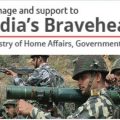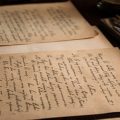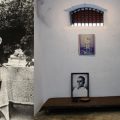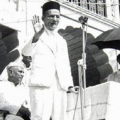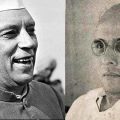A Reply to Critics who Object Veer Savarkar’s Bharat Ratna Felicitation
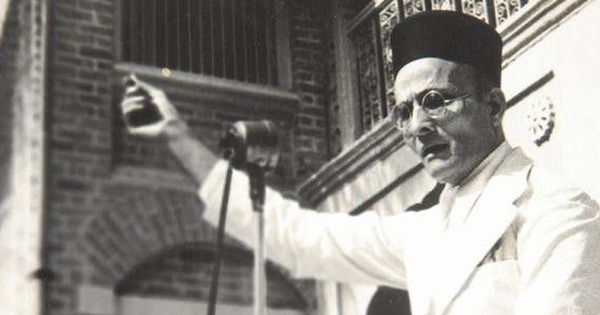
There was a thought making its place in my mind, whether I should pen down an article as a reply to all the critics of Savarkar who already have concluded that Savarkar was just a fanatic Hindutva leader, and he is the least one entitled to receive the Bharat Ratna.
The kind of illuminated arguments that I came across on the internet, let me make a list of them first so that it will be easy to assess and understand the nature of them.
1) Savarkar’s role in the freedom movement is less than obscurity.
2) His contribution to India’s independence movement is less than negligible.
3) His claim to write a book during his imprisonment at the Cellular jail in Andamans is a false claim.
4) His mercy Petitions proved that he was a coward.
5) Savarkar was a British Stooge.
6) Savarkar assassinated Mahatma Gandhi and many more.
So the pen-ultimate argument that flows from all these claims: that Savarkar shall not be given the Bharat Ratna; as simple as it can be.
Now, frankly speaking the nature of claims are not only made through writings, but through various other channels, like YouTube blogs and more platforms. Moreover, I feel all these claims are not only dubious but also uninformed. If they have read Savarkar and understood his true import they wouldn’t have claimed so or could have taken a much informed stand on him. But, my article is not to criticize them but to just put forward certain deeds of Savarkar and then let the people take an informed stand about him, because Ignorance is not bliss anymore; it is more a curse. My submission with regard to Veer Savarkar deeds are as follows:
Veer Savarkar was born in the year 1883, in the village of Baghur, located outside the town of Nasik in Maharashtra. He belonged to the family of Chitpavan Brahmins.
The atmosphere prevailing within home led Savarkar to be in psychological touch with many epic heroes of Hindu Culture, but the one who attracted him the most was Shivaji.
Savarkar, at the age of nine, lost his mother to cholera, creating an emotional void which Savarkar recounted in the later days of his life. The void created by his mother’s death and a mix bag of feelings led Savarkar to write both poetry and prose since an early age and around this time; he started penning down his first couplets and prose.
He was a fervent admirer of Lokmanya Tilak’s Marathi newspaper “Kesari“. Ironically, it was Tilak who supported Savarkar in his journey for the scholarship to study in London.
Ganesh, Vinayak’s elder brother, was also a freedom fighter and may have played a pivotal role in fostering the spirit of revolution in his younger brother. In 1901, Savarkar and his elder brother founded “Mitra Mela”, while Savarkar was enrolled in High School in Nasik. This would be the first of many revolutionary societies with which Savarkar was associated. Though the activities of Mitra Mela were on a small scale, Janaka Bakhle records “{it} was a consciousness raising society, holding more lectures than anything else.” Mitra Mela, can be described as the young Savarkar’s symbolic first foray into the world of political activities, also the first occasion where he came in close contact with the Local authorities.
Savarkar absorbed history to rectify the present. Savarkar wanted his friends and fellow members of the society to be connected with his ideal of anti-colonialism and encouraged them to “read works dealing with major historical figures, biographies of Mazzini, Garibaldi, Napoleon Bonaparte, and along the way, study a little bit of Spencer and Mill”. Among all the revolutionaries and epic heroes, two figures always cast upon Savarkar a spell which lasted till the end, Shivaji and Mazzini, both of whom he wrote about later in life. During Savarkar’s stay in London under the tutelage of Shyamji Krishnavarma, the works of the likes of Herbert Spencer and other sociologists and philosophers, would leave a permanent mark upon Savarkar’s ideology.
In 1902, Savarkar shifted to Pune to attend Fergusson College. It was in Poona that “Mitra Mela” gradually transformed into the “Abhinav Bharat”, a group having national recognition. Savarkar was inspired to form the society on the lines of Mazzini’s “Young Italy”, a similar revolutionary group of young people founded in 1831. “Abhinav Bharat” advocated a boycott of foreign goods and extended strong support to the Swadeshi movement. In 1905, The principles of “Abhinav Bharat” were reduced to action, when Savarkar organized the first bonfire of foreign-made clothes in India, and planned to have Lokmanya Tilak as a speaker at an event.
In 1906, Savarkar received a scholarship to study at India House – a hostel for Indian students in London run by Shyamji Krishnavarma, who encouraged his students to rise against the Colonial imperialism and worked towards the same goal by instilling in his students the ideology of anti-British. Lokmanya Tilak was the one sending a letter of recommendation to Krishnavarma about Savarkar.
In 1905, India Home rule society was founded by Krishnavarma, aimed at the independence of India. Savarkar quickly rose through the ranks. In 1907, a year after his arrival in England, there was a turnaround in the sequence of events, as Krishnavarma fled to Paris to evade arrest for his statements made in the publication and the leadership of the India House passed to Savarkar. Though, Krishnavarma continued to publish his English monthly “The Indian Sociologist” from Paris, but then it was Savarkar who played the lead role regarding the Indian revolutionary activities in Great Britain, especially those which were doctored from India House.
In 1907, Savarkar wrote and circulated an immensely patriotic pamphlet “Oh Martyrs”, during the celebration of the anniversary of the First War of Independence 1857, in London. The article praised the Indian bravery and empathize with the sacrifice of the Indian Leaders. Let me quote an excerpt from the leaflet which would portray the tone of the author and the “Flare” it produced, Savarkar writes:
“We take up your cry, we revere your flag, we are determined to continue that fiery mission of ‘away with the foreigner,’ which you uttered, amidst prophetic thunderings of the revolutionary war. Revolutionary, yes, it was a Revolutionary war. For the War of 1856 shall not cease till the revolution arrives, striking slavery into dust, elevating liberty to the throne.”
In 1909, Savarkar published his famous work, “The Indian War of Independence”. This work was a re-projection of the 1857 event from the viewpoint of an Indian, which was characterised by the British, a military mutiny that soon grew to a widespread civil rebellion. The Government acted immediately and put an embargo on it, but like other revolutionary works, “The Indian War of Independence” was widely circulated by the underground Indian revolutionary groups within Great Britain and was well received. It was also illegally smuggled into India.
Bakhle, during her analysis of the work, observes:
“in chapter after chapter, he noted that 1857 had ushered in a new era – in particular the end in perpetuity of Hindu – Muslim enmity – and he imagined a future for India with two distinct religious communities bound together in an unshakeable entity.”
On 4th July, 1911 Savarkar was transported to the infamous Cellular Jail in the Andaman and Nicobar Islands to serve 50 years of Imprisonment. The Period Savarkar spent at Port Blair strengthened his spirit of revolution and helped him to evolve as a man committed to his cause.
The story of My Transportation for life is the detailed autobiographical work of Savarkar, recounting the entirety of his stay at Andamans. This is a heavily relied on resource if one wishes to reconstruct Savarkar’s life between the periods of 1911-1923. However, it is important to mention that The Story Of My Transportation for life was first published as a serial publication in the magazine Kesari, in 1926, five years since Savarkar left the Cellular Jail. In 1930, it was first published as a book.
The format of the Cellular jail was based on Jeremy Bentham’s idea of the Panopticon. At the time, when Savarkar was serving his tenure at Port Blair, his elder brother was an inmate there. Ganesh Savarkar (known as “Baburao”) find occasional references in Savarkar’s work. From chapter IX, in a particular section, Savarkar recounted in detail, the mental agony, and the physical torment that his brother underwent when forced to work the Oil- Mill, despite being extremely ill. Savarkar further added, though conscious of Baburao’s condition, the prison doctor was reluctant to remove him from his labour, as he feared that he might be accused of sympathizing with the inmate. Baburao, though survived the sentence in Andaman, couldn’t recover from its horror.
The severity of working the Oil- mill is validated by numerous reports, including the works of Barindra Ghosh and many former Prisoners interviewed during the Guardian article. The mental agony and physical torment underwent by the political prisoners are hard to describe and many of them worked so hard, that they were physically unable to continue the labor allotted. Sen observed:
“…it is clear that the labour to which political prisoners were subjected in the Andamans was intended to function as a form of torture…There was, in such labor, no question of ‘reform,’ and no possibility of rehabilitation. Political prisoners were not expected to actually meet their quota of Oil; those who did were not rewarded….”
In the article “Survivors of our hell”; Authors Cathy Scott-Clark and Adrian Levy noted:
“Among the records of the Government of India’s Home Department, we found the Empire’s response in its Orders to Provincial Governors and Chief Commissioners. Very Secret: Regarding security prisoners who hunger strike, every effort should be made to prevent the incidents from being reported, no concessions to be given to the prisoners who must be kept alive. Manual methods of restraint are best, then mechanical when the patient resists.”
Scott-Clark and Levy further writes, shockingly “within four years of [of founding the penal colony in 1858] 3,500 out of 8,000 transportees had been killed or had died of fever….” The staggering figure is corroborated by Sen who notes in Disciplining Punishment that near the middle of the 19th Century, the Government acknowledged mortality rate approaching 30% at Port Blair.
Savarkar in My Transportation for life, describes in detail, about the prisoners dejected with the conditions in the Cellular jail. Moreover, watching their colleague suffer and punished severely, orchestrated work strikes and it seems that Savarkar was often the leader. According to Savarkar, Mr. Barrie declared that “Savarkar was the father of unrest in the Andamans…” Savarkar involvement in such work strikes reflect Savarkar’s undying spirit of nationalism and commitment to his causes, even under the most trying circumstances.
Savarkar asserted the importance of reading for augmenting intellectual ability and to strengthen the revolutionary philosophy, to further one’s political agenda. Savarkar’s years of relentless effort and struggle with the prison officials led to establishment of a prison library which included works of Swami Vivekananda, Tolstoy (My Religion), Mazzini,Bluntschli, Herbert Spencer, and works in theosophy by Annie Besant — among many others.
He further recounts that owing to his excellent memory, he was able to produce written outlines of many books which he had read previously. The outlines either scribbled on scraps of paper or on the walls of the prison, educated other prisoners, and also motivated Savarkar to continue his work. In one occasion, he describes “a full outline of Spencer’s ‘First Principles’ onto one wall, and “all the definitions of political economy as I had learnt from Mills’ work on the subject” on another.
Savarkar was the first political leader to daringly set Independence as India’s goal in 1900, which was accepted much later by the Congress in its Lahore session in 1929. And he worked relentlessly on abolishing the caste system.
Providing guidance on how to abolish the caste system and untouchability, Savarkar said: “To achieve social revolution we first have to strike at the birth-based caste system and bridge the differences between the various castes. As an action plan, a person born into a Brahmin family should be called a laggard if he is one and a person born in a shudra family must be called intelligent if he is one no matter whether their fathers and forefathers were intelligent or laggards.”
In 1929, he organised yagyopaweet (sacred thread) ceremonies and recitation of the Vedas, community dining and temple entry — all targeted at those who were then considered untouchables. In 1907, Bhikhaiji Cama raised a tricolour at an international conference in Stuttgart, Germany, designed by Savarkar. The flag with green, yellow and red fields represented Islam, Hindu and Buddhism.
Savarkar during his tenure as a political prisoner submitted a number of Mercy Petitions for remission of sentences but few would acknowledge that. In 1917, another mercy petition was submitted by Savarkar, for general amnesty of all political prisoners, though the same stood rejected.
Well To say, it is not the end of the path of Savarkar but there are many deeds which I am not able to submit here due to paucity of space. Many of us judged Veer Savarkar and concluded that he should not be given Bharat Ratna but my question remains are we justified in weighing the contribution of any revolutionary or for that anyone who sacrificed their lives or youth or any portion of their life at the altar of freedom. Are we justified to quantify their sacrifices? There are propositions also from many quarters of our country that Bhagat Singh, Chandrasekhar Azad, Rajguru, Sukhdev shall be given Bharat Ratna, I support them too but to say give them Bharat Ratna instead of Savarkar is just a reflection of Political biases and to garner vote banks and nothing more. To my conscience, we as a nation owe to everyone of those national icons who sacrificed their lives and their youth at the altar of freedom, and they all deserve Bharat Ratna more than anyone else. In those ages, Nationalism and love for motherland was above any ideological preferences, but sadly the same is not now.
References:-
-
Dhananjay Keer, Veer Savarkar, 2d ed. ( Bombay: Popular Prakasha, 1966).
-
Janaki Bhasle, “Savarkar (1883-1966), Sedition and Surveillance: The Rule of Law in a Colonial Situation”, Social History 35, no.1 (2010): 56
-
Paul Schaffel, “Empire and Assasination: Indian Students, ‘ India House’, and Information Gathering in Great Britain, 1898-1911” (Wesleyan University, 2012), 28.
-
Nicolas Owen, “The Soft Heart of the British Empire: Indian Radicals in Edwardian London,” Past & Present 220, no.1 (2013): 173.
-
V.D. Savarkar. ” Oh Martyrs,” London 1908.
-
Vinayak Damodar Savarkar, “The Indian War of Independence of 1857 ( London 1909), 234.
-
Jeremy Bentham. “Panopticon: or, the Inspection-House.
-
Satadru Sen, Disciplining Punishment: Colonialism and Convict Society in the Andaman Islands (Oxford; New York; New Delhi: Oxford University Press, 2000); 10.
-
V.D. Savarkar, “My Transportation for Life,” in Selected Works of Veer Savarkar ( Delhi: Abhishek Publications, 2007), 88.
-
Cathy Scott-Clark and Adrian Levy, “Survivors of Our Hell,” The Guardian 2001.
-
Barindra Kumar Ghosh, The tale of My Exile (Pondicherry: Arya Office, 1922).
Featured image courtesy: Google.

